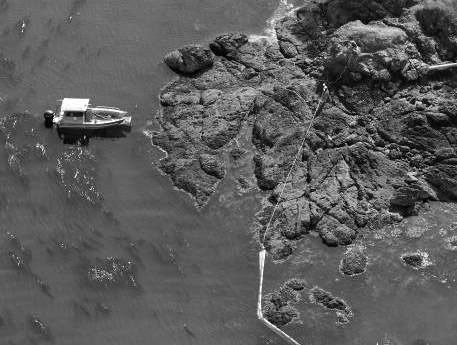By Jackie Wolf
Special to the Journal
It was nearly 30 years ago when residents of the San Juan Islands faced the reality of oil washing ashore on the west side of San Juan Island, as well as a long wait before oil responders and equipment could arrive from the mainland to begin the clean-up. It was from a source never found … and it was the catalyst for island folks to set in motion the steps that would lead to our very own community-based, non-profit oil spill response organization.
Islands’ Oil Spill Association began responding to local spills in 1987 and since that time, we have been called for over 600 reports. Trained and certified IOSA responders have worked on more than 120 clean-ups, containments or wildlife responses. Many of the remaining calls required IOSA responders to do an on-site assessment and most were for small incidents that were resolved quickly by vessel operators, marina personnel, or were for a substance, often an algae bloom, that turned out to not be a petroleum product or anything that required intervention.
We have continued to work on enhancing the various aspects of preparation for both large and small oil spills, including equipment improvement and replacement, training for existing responders and new recruits and, of course, finding the funds to allow us to do the best work we can do.
Because of the possibility of increased tanker traffic within just a few years, we have recently focused a lot on all aspects of protecting the western parts of the San Juan Islands, such as the waters and shorelines of west Orcas, west San Juan and Stuart Island.
We’ve held drills in bays on the west side of San Juan Island, and on Stuart Island, IOSA has done a number of drills in both Reid and Prevost Harbors over the years. The latest one in April 2015 gave us the opportunity to improve substantially in the effectiveness of the boom deployment strategy, shore attachment locations and positioning.
For Orcas Island’s west side, we held an open-water oil collection drill in President’s Channel, complete with an oil skimmer for recovery and boom deployment for containment. Crew members then went to shore near Camp Orkila to practice with shoreline oil collection gear and techniques. Good photos of all these activities can be found on our website at: www.iosaonline.org.
IOSA has spill response equipment in many locations throughout the islands, with 13,900 feet of boom stationed on trailers, spill response vessels and in secure locations near the water on land, such as Sucia Island, where it can be accessed and pulled down to the water quickly, then attached to a vessel and hauled out to begin work!
We continue to provide free training classes and drills several times a year, as refresher classes for our current containment and/or oiled bird responders and to train new island residents who want to help in the event of an oil spill affecting any part of the San Juan Islands.
In part two of this article next week, we will tell you about the many ways you can help support IOSA. Please contact us at iosaoffice@rockisland.com for training opportunities or other questions.



